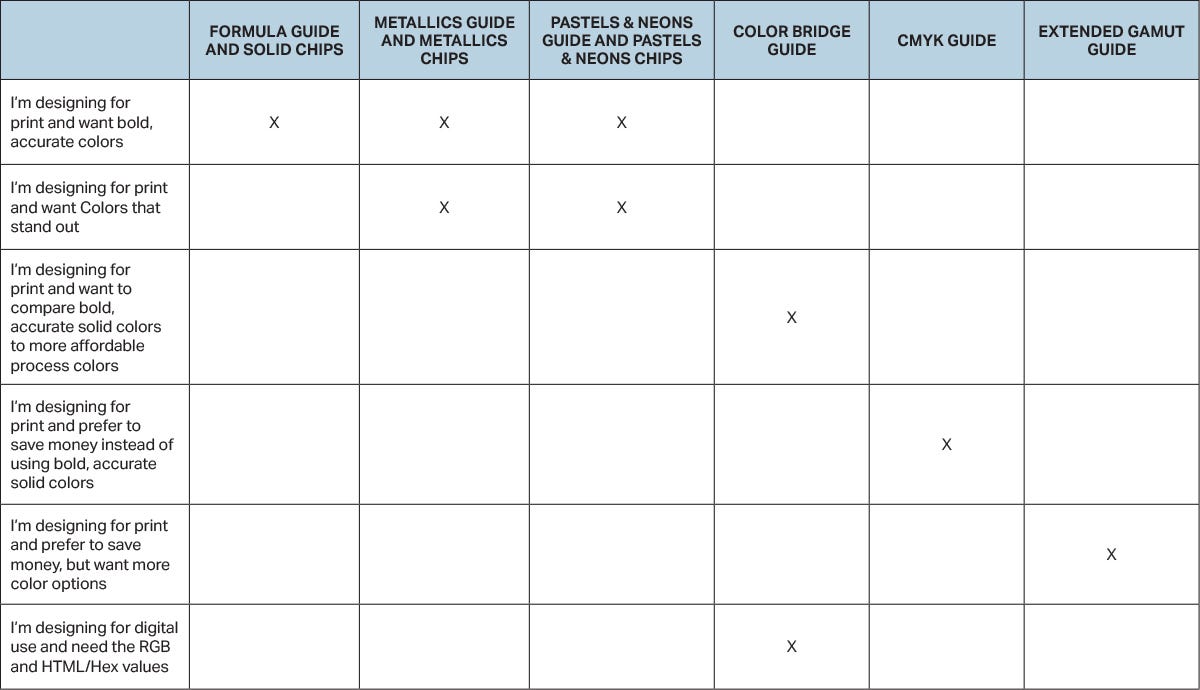IF YOU WORK IN PRINT, PACKAGING, OR DIGITAL DESIGN, YOU’RE IN THE RIGHT PLACE!
You’ve probably heard the word PMS, which stands for the Pantone Matching System, a proprietary numbering system for colors used in graphic design. Did you know the Pantone Matching System includes both solid and process colors?
Solid colors (sometimes call spot colors) are the truest representation of color intent in graphic arts. Solid color printing, also known as spot printing or offset printing, is the process by which a single color is formulated and then applied through print.
Process colors utilize a limited number of inks, such as cyan, magenta, yellow and black (CMYK), applied in different ratios to create a variety of colors. Process colors are generally used when color accuracy or range is less critical.
WE HAVE 3,026 SOLID COLORS, AVAILABLE IN THE FOLLOWING FORMATS:
WE HAVE 6,732 PROCESS COLORS, AVAILABLE IN THE FOLLOWING FORMATS:
Pantone Connect is a digital platform providing designers, producers, and brand managers exclusive access to over 15,000 Pantone Colors – every Pantone Color in every Pantone Library! Packed with helpful tools to build, share, and save smart palettes, Pantone Connect inspires creativity and ensures consistency and accuracy in branding, fashion, and product design. Most importantly, it’s now the only way to bring all your market-relevant, in-demand Pantone Colors into your design workflow for use in your Adobe® design programs.




